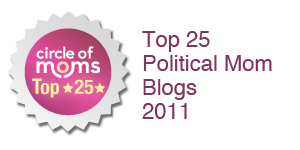Contributed by MOTHERS volunteer and guest blogger Rosanne Weston.
When I was growing up in Brooklyn, New York, I thought that “culture” was something people either had or didn’t. In my young thinking, those folks who listened to opera and attended the ballet had it; the rest of us who loved Elvis and considered dancing on the hot sidewalk to rock ‘n roll blaring from a portable radio the height of artistic endeavor, well, we didn’t.
I know now that it’s more complex than that, and that culture not only connotes a refinement of taste but also behavior typical of a class or group. And when I recently heard Ellen Bravo, long-time activist and expert on family-friendly work policies, state at a Pay Equity Roundtable that it is embedded in our culture to pay women less than men for comparable work, I suddenly understood clearly why change takes such a long time.
Fair pay, or pay equity, is a cultural issue that has nothing to do with what music you love and whether you eat with the right fork or not. It is a mark of the valuation by a society of women, and, by extension, of families. There is still a large part of our population – men and women – who think that it is all right to pay women less. The old template of the ideal worker, usually the breadwinner husband, and the housewife who works for pin money still exists in our mental universe, if it barely does so in the real world. And there are still some people who think that a woman deserves what she gets – lower pay, harassment, teasing – if she ventures into a male-dominated environment.
Just ask Lilly Ledbetter, the woman who sued Goodyear when she discovered that for almost two decades, despite exemplary work, she was consistently awarded lower pay raises than her male counterparts. At that same Roundtable discussion, she described unsympathetic neighbors responding to her lawsuit by telling her she had no business working in a tire manufacturing plant in the first place.
So I started to think about things that were embedded in my thinking over the years, and how they have changed.
For example, when I was in high school, girls had to take something called Home Ec, while boys were assigned to Shop. If a girl was unlucky enough to be sent by a dean or teacher on an errand into a Shop classroom, the male students would greet her with a variety of yelps, screeches, table banging and animal noises. While she stood with eyes lowered, praying for a quick exit, the male teacher made some feeble efforts to curb the uproar, all the while shrugging and smiling along with the boys.
But what’s really interesting is that we girls always felt powerless. How could we complain when we had ventured, like Lilly Ledbetter, into male territory? We had internalized the belief that there were places we did not belong. And if we did say something, we were told that “boys will be boys,” - in other words, learn to live with it. I am well aware of the amount of violence directed at girls and women today, but would a school allow such institutionalized humiliation now? I don’t think so. In fact, both male and female students are assigned to Shop and Home Ec, (or whatever it is they’re calling those classes now) in schools that offer them. Shifts in cultural expectations eroded a long established pattern of behavior.
Years later, when I was a young, married woman, a supervisor in a large organization had no qualms about asking me if I planned to become pregnant that year. He wanted some assurance before he offered me a promotion. I felt uneasy; something about that felt wrong. Yet it was such a culturally embedded assumption that a woman would leave the workplace at the first sign of fetal quickening, that many women were passed over for advancement despite the strength of their performance. I bought into that, too, and did not ask my supervisor if he questioned whether the overweight, middle-aged men in the company, prime targets for heart disease, were planning on having coronaries that year.
Questions about family planning are less likely to be asked now, at least in New York State, where I live, and where it is illegal to ask. I wonder what they are doing in the 24 states where it is not illegal.
And women are no longer subjected to everything from mild teasing to merciless harangues when they show up to take their Law or Med Boards, as women of my generation were. Women now comprise half or more of the lawyers and doctors in this country. It doesn’t so much as raise an eyebrow.
So change does happen, but it requires a paradigm shift in our assumptions about what is possible for women and men. I know too many women in my (middle) age group who experience real regret at not having pursued what was considered unsuitable work for women. They suffered emotionally and financially for letting the cultural norms keep them from creating a life on their own terms. So it was interesting to hear the problem of pay inequity framed in terms of cultural attitudes by panelists like Bravo and Ledbetter.
Women still earn 78 cents for a man’s dollar. Long term, women actually earn 38 cents to that dollar due to caregiving work. Archaic workplace structures and family and medical leave practices place unnecessary obstacles in the paths of women trying to balance work and family life. We need to redress these situations legally and politically. But we also must be attuned to the subtler attitudes that allow these practices to continue. One woman making a stand for herself might be courageous, but it does not move us toward a fairer and more equitable society. Even as we look into our individual biases, we must work together so that change is institutionalized and compensation is based on the quality of the work performed. Not only is that fair, but everyone – women, men, children – benefit when women are paid and advanced at the same rate as men.
When it comes to culture in the arts arena, there is room for both Puccini and Presley. But there is no room for historical behaviors that hinder one group or another from fair and equitable compensation and advancement. That’s the kind of culture that we need to change.



